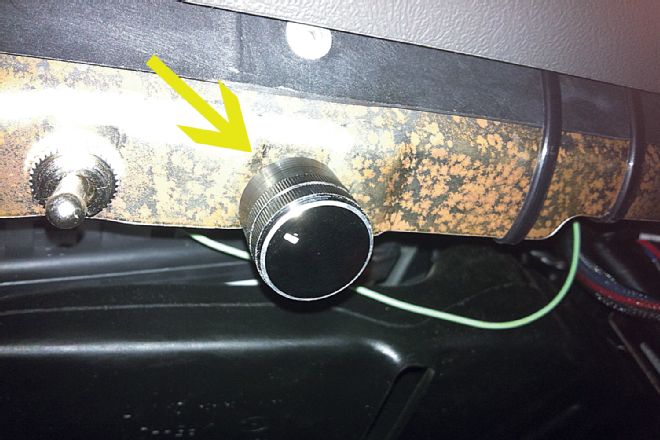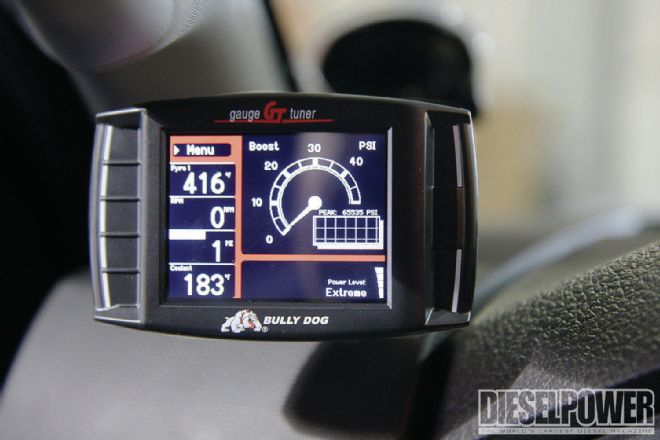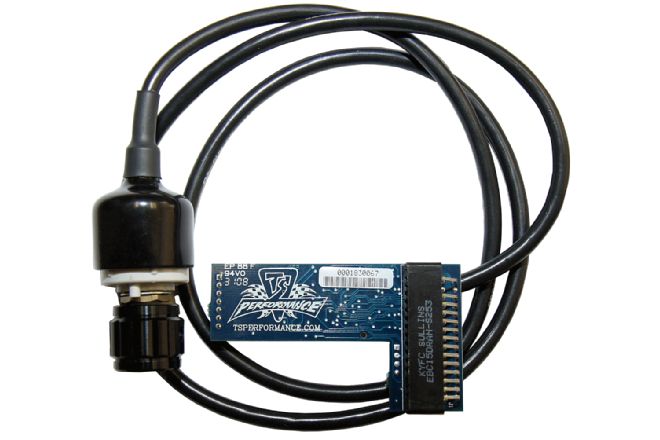What chip you running? It’s a common question asked by many diesel performance newbies, even though programmers tune most modern diesel engines. Although it’s as simple as a vocabulary mix-up, it’s important to know the difference between a programmer, chip, and pressure box as you navigate your way through the industry.
Programmers
Starting with the most common form of turning up an electronically controlled diesel, programmers best represent the plug-and-play culture that is diesel performance. These handheld devices simply plug into your truck’s OBD-II port, save the computer’s stock calibration, and upload a modified version geared toward performance, fuel efficiency, better towing ability, or any combination of the three. Also known as tuners or downloaders, some programmers allow you to adjust things such as transmission shift points and firmness and top speed limiter, recalibrate the speedometer to accommodate bigger tires or gear ratio changes, and even read and clear diagnostic trouble codes.

| Innovative Diesel’s FICM Flash programmer for 6.0L Power Strokes is a unique device in the tuning industry. It works on ’03 to ’07 Super Dutys already uploaded with custom PCM tuning and fine-tunes the engine’s fuel injection events for added horsepower, quicker throttle response, and improved fuel economy. Innovative claims a 1-to-2-mpg increase is common, but in our testing we saw an incredible 3-mpg improvement (Dec. ’12).
Most programmers operate one setting at a time, which is to say you’ll have to pull over and shut the truck off to change tunes. The majority of off-the-shelf programmers feature standard calibrations (also known as “canned tunes”) that apply to virtually every year truck with that specific engine. While these off-the-shelf programmers provide great gains for the entry-level diesel enthusiast, programmers supported by custom tuning software (EFILive and H&S MCC, for example) can unlock even more power, as well as fine-tune the entire powertrain. Custom tuning becomes very important once you’ve added bigger injectors and a built transmission, and upgraded your turbocharger(s).

| When it comes to monitoring powertrain vitals, Edge’s CTS (color touch screen) is one of the best products on the market. You can see everything the ECM does and watch five different parameters at a time. Horsepower can also be increased with Edge’s CTS, and the company recently released tuning for the ’11 to ’13 LML Duramax that provides an emissions-friendly, 81hp increase. Edge also offers the CTS Insight, which has all the powertrain monitoring functionality without the tuning for a lower cost.
Chips
Unlike programmers, chips are a more primitive way of increasing horsepower. They can be traced back to the early days of electronic power-adders, when tuning via the OBD-II (or OBD-I on 6.2L and 6.5L GM V-8s) port hadn’t yet been established. Chips either connect or plug directly into the engine’s computer. A popular example is the TS Performance six-position chip for 7.3L Power Strokes, where the chip physically piggybacks to the powertrain control module (PCM) and overrides it. Other examples include Kennedy Diesel’s TD-Max chip and Heath Diesel’s Max E Tork chip for the DS4 injection pump-equipped 6.2L and 6.5L GM diesels, which connect directly to the ECM but don’t offer on-the-fly adjustability.

| TS Performance’s MP-8 is a great example of what a pressure box can do for a common-rail diesel. It simply plugs into the fuel rail harness, can be turned up or down via a cab-mounted user-dial, and provides up to a 100hp increase. Because nothing is communicated or downloaded to the engine’s computer, no tuning footprint is left behind, leaving no evidence to void your warranty.
Also hardwired in, but different than the aforementioned chips, are DSP5 switches. Found on Duramax-powered Chevy and GMCs, these switches are just what they sound like: a switch that allows you to change tunes on the fly. The switch itself doesn’t override the ECM—it only allows you to physically turn a knob to navigate your available tunes. An EFILive-tuned ECM must accompany a DSP5 switch.
Pressure Boxes and Modules
The simplest form of plug-and-play diesel performance lies in pressure boxes and modules. Most of these power-adders intercept factory signals sent to the engine’s computer and essentially trick it into thinking more fuel is needed. Some modules tap into the manifold absolute pressure sensor (MAP) and the controller networking (CAN-bus) system (common on ’98½ to ’02 24-valve Cummins-powered Rams), which allows the timing and fueling curves to be re-mapped, and the turbo to build more boost. Pressure boxes such as TS Performance’s MP-8 capitalize on the conservative factory fueling parameters on modern diesel engines yet still keep the engine and its fuel system reliable. The MP-8 intercepts the rail pressure sensor on common-rail engines, effectively fooling the injection pump into creating more pressure.

| The tuning tool of choice for Duramax fans is EFILive. Once a custom calibration is created using EFILive software, it’s uploaded to the truck’s ECM by way of either a V2 FlashScan, or an AutoCal, both of which are handheld programming tools. Now that EFILive is available for ’06 to ’07 5.9L and ’07½ to ’09 6.7L Cummins mills, it’s reduced the number of late-model Rams sporting stacked power-adders. This is because EFILive software offers access to virtually every engine parameter you can imagine (timing, duration, and rail pressure, to name a few), and a custom calibration can extract the most horsepower possible for a given setup yet keep the engine reliable at the same time.
Not sure which programmer, chip, or box to go with for your truck? Our advice is to do your research and talk to several companies before you make your final decision. Also, read through our captioned photos in this article, as they showcase several popular power-adding devices currently on the market.


